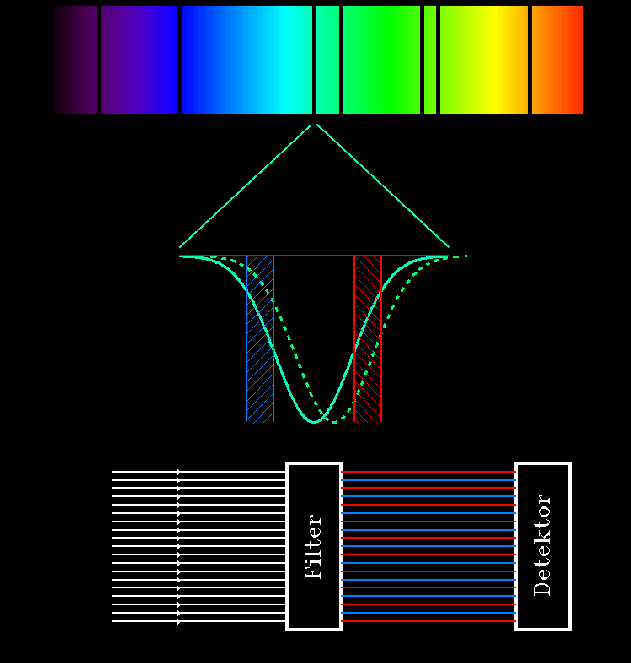

When solar light is sent through a prism, the light is refracted and splits up into a spectrum, just like what happens in a rainbow. Closer investigation of this spectrum reveals that it contains dark lines which correspond to absorption of light at specific wavelengths by atoms in the solar atmosphere. The velocity of the solar surface can be determined by measuring the shift of these lines caused by the Doppler effect.
The principle is shown in the middle of the figure : the solid curve shows the intensity profile over the line when the absorbing material does not move, the dashed line shows the profile when the material moves away from the observer. We can use this effect to make velocity images of the solar surface. The light from the Sun is sent through a filter that alternates between letting through light from a narrow range of wavelengths on either side of the centre of the line (marked here in blue and in red). The two light intensities are measured at every point on the solar surface using an imaging camera. The difference between the two intensities changes when the spectral line shifts, and therefore that difference is a measure of the velocity.
The result of this observation is a Doppler image, which shows the velocity field over the solar surface.
Here the velocity field is dominated by the solar rotation : one edge of the Sun moves towards us with a speed of about 2 km/s, while the other edge moves away from us. If that rotational velocity is subtracted, one obtains a velocity image which is dominated by oscillations :
By analysing a long time-series of such images, the individual oscillations can be isolated.